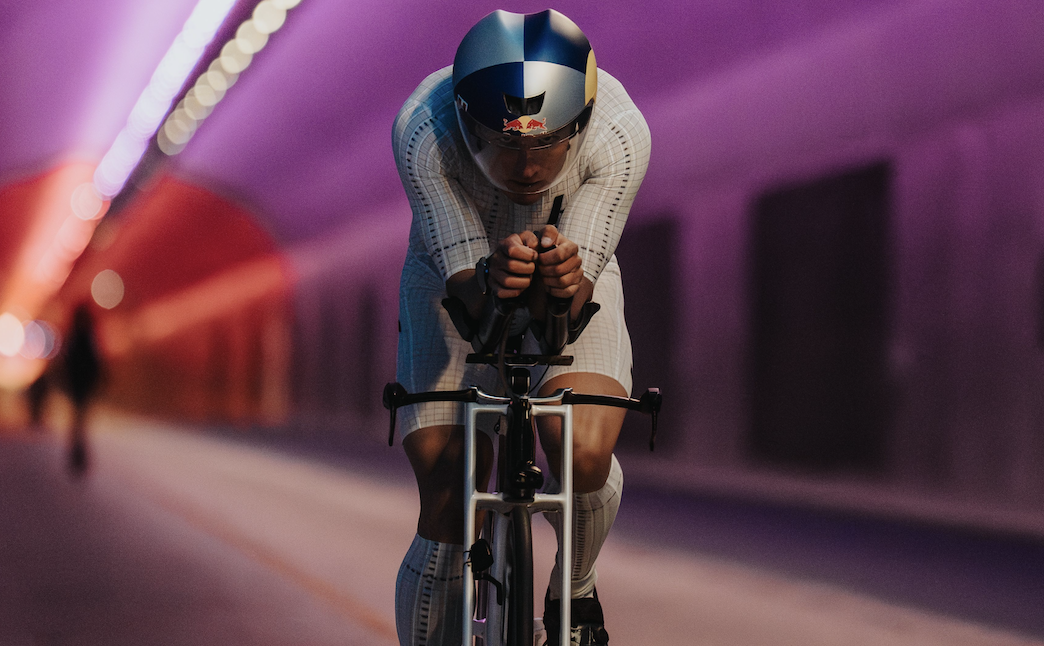
Date: 7–9th July, 2025
Location: Bergen, Norway – Fyllingsdal Tunnel
Name: Kristian Blummenfelt (@kristianblu)
Accolades:
------------------------------------------------------------------------------------------------------------
Kristian returned to testing with Body Rocket during a focused three-day training camp in Bergen, Norway, joined by performance apparel brand Surpas, CORE Body Temperature and UK-based bike fitter Sam Barley. The goals of this session included:
------------------------------------------------------------------------------------------------------------
Testing took place in the Fyllingsdal Tunnel, the world’s longest purpose-built tunnel for pedestrians and cyclists. The team used a 1km straight section of the tunnel for 2km out-and-back test runs, ensuring consistent conditions for accurate comparisons.
Each run isolated a single variable either a helmet or Surpas suit change with CdA values reviewed post-run to guide iterative refinement. This method ensured confidence in the validity of any aerodynamic gains or losses observed during testing.
------------------------------------------------------------------------------------------------------------

The aerodynamic drag (CdA) of different Surpas suit and helmet configurations, including experimental modifications such as applied strips. Each combination is accompanied by the corresponding watts gained or lost.
Tests using additional aero strip variations (R6–R10) either increased drag or provided only minor benefits, indicating limited performance potential in those adjustments.
This three-day training camp in Bergen marked a key milestone in the build-up to Kristian Blummenfelt’s 2025 Ironman World Championship campaign. Leveraging Body Rocket’s aerodynamic testing tools, Kristian and his team made evidence-based decisions around kit and position unlocking a solid 9.6 watts in gains through the new Giant Rivet MIPS Aero helmet and Surpas suit.
Now, with the gains locked in and the hard work behind him, all eyes are on the World Championships in Nice and we’re wishing Kristian the very best as he takes on the next big challenge!